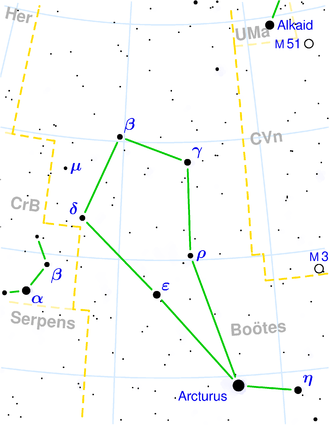NGC 5623
| Galaxy NGC 5623 |
|
|---|---|

|
|
| SDSS recording | |
| AladinLite | |
| Constellation | Bear keeper |
|
Position equinox : J2000.0 , epoch : J2000.0 |
|
| Right ascension | 14 h 27 m 08.7 s |
| declination | + 33 ° 15 ′ 09 ″ |
| Appearance | |
| Morphological type | E / LINER |
| Brightness (visual) | 12.5 mag |
| Brightness (B-band) | 13.5 likes |
| Angular expansion | 1.6 ′ × 1.1 ′ |
| Position angle | 17 ° |
| Surface brightness | 13.2 mag / arcmin² |
| Physical data | |
| Redshift | 0.011194 +/- 0.000093 |
| Radial velocity | 3356 +/- 28 km / s |
|
Stroke distance v rad / H 0 |
(153 ± 11) · 10 6 ly (47.0 ± 3.3) Mpc |
| history | |
| discovery | Wilhelm Herschel |
| Discovery date | March 13, 1785 |
| Catalog names | |
| NGC 5623 • UGC 9260 • PGC 51598 • CGCG 192-021 • MCG + 06-32-35 • GC 3891 • H II 329 • h 1808 • | |
NGC 5623 is a 12.5 likes bright elliptical galaxy with pronounced emission lines from the Hubble type E in the constellation Bootes and about 153 million light-years from the Milky Way center.
It was discovered on March 13, 1785 by Wilhelm Herschel with an 18.7-inch reflector telescope, who described it as "pF, S, R, r, north of two pretty bright stars".
